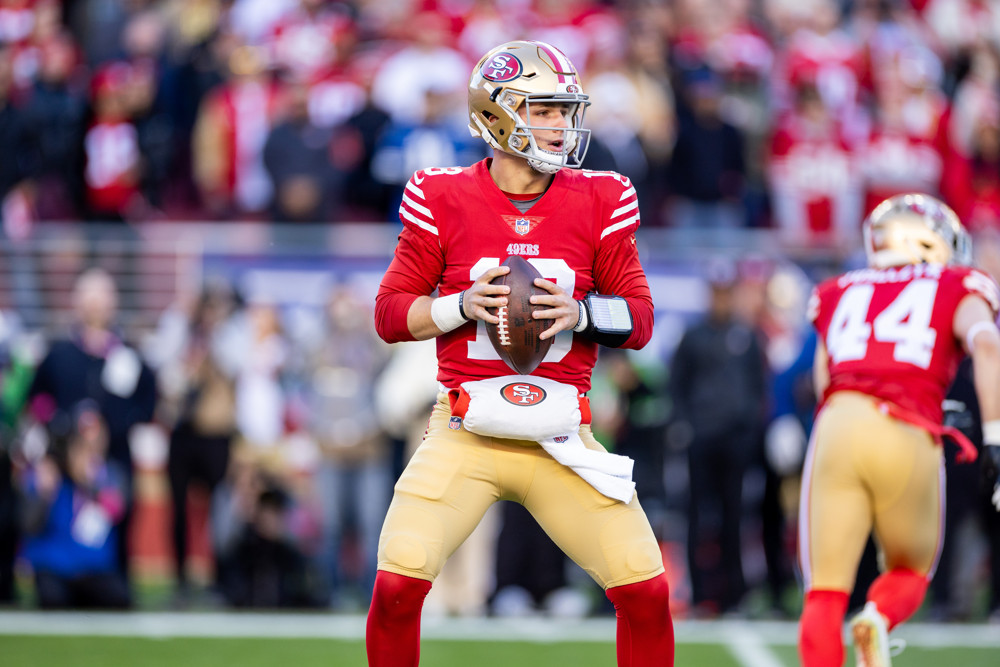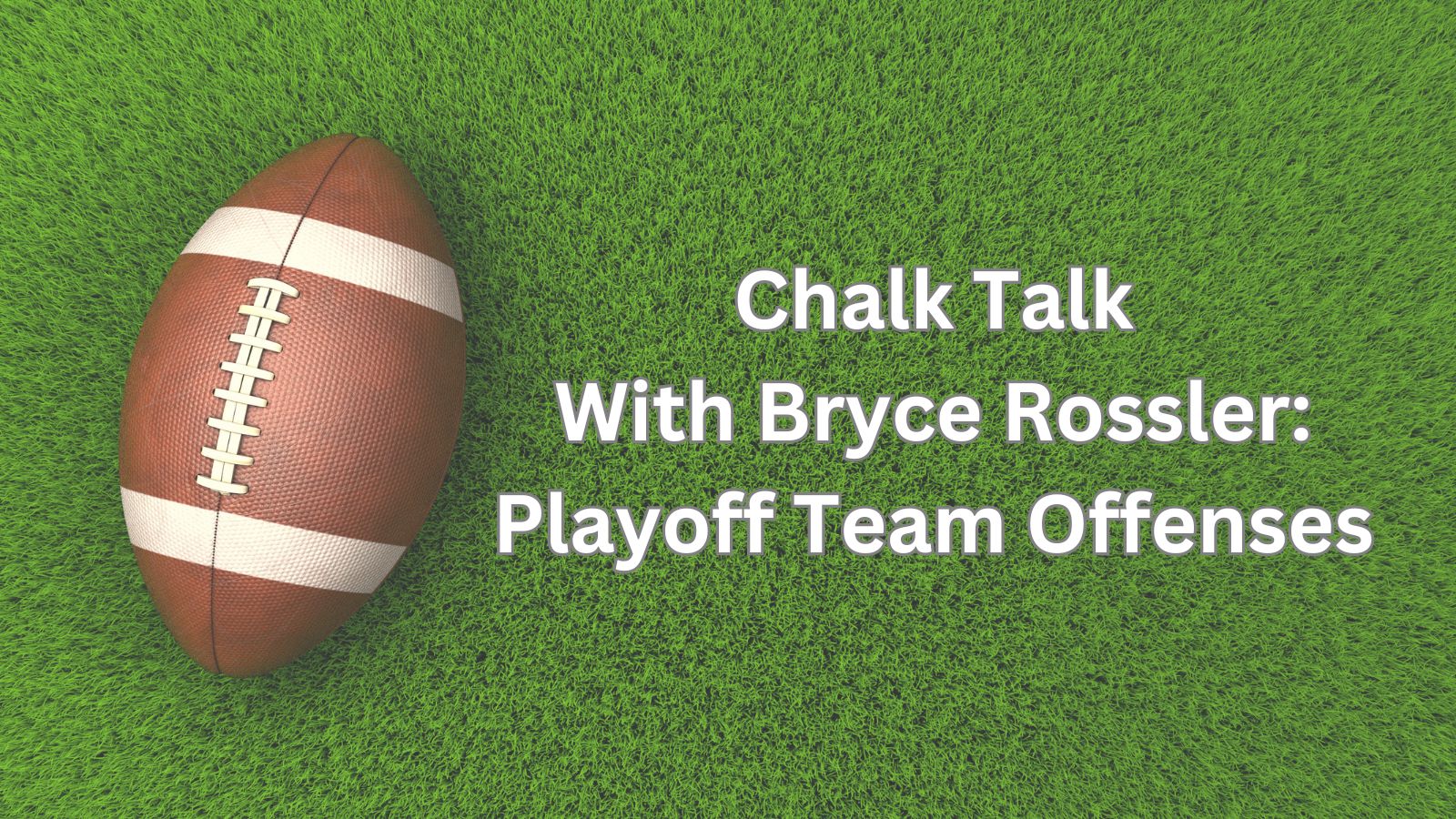For a full treatment of the draft results and team grades, check out this magnum opus from Nathan Cooper, the head of our scouting operation.
We wrote a bunch of articles in the run-up to the NFL Draft that evaluated players, teams, and the league as a whole. How does what happened in this year’s draft reflect on what we learned through those pieces?
Combine Measurements and Total Points – Do they Correlate?
Our article on combine measurements looked to see how well they correlated to a player’s 2-year Total Points production value. We broke down all positions and their relative Total Points categories to see what combine measurements correlated well to success early on in a player’s career.
Anthony Richardson (Colts) set a broad jump (10’9”) and vertical jump (40.5”) record for quarterbacks at the combine. The broad jump has the highest correlation of Total Points production for quarterbacks, so his gaudy combine numbers may translate well if he is the presumed starter off the bat in Indianapolis. New head coach Shane Steichen …what are you gonna do? (more on Richardson in a little bit)
The Chiefs traded up in the second round to get SMU receiver Rashee Rice. Rice was tied with West Virginia’s Bryce Ford-Wheaton with the highest vertical jump (41”), which also shows a good correlation for receiver success. Patrick Mahomes worked out with Rice during the offseason, so he was able to see first hand the leaping abilities that his newly acquired weapon has.
What Does a College Receiver’s Route Tree Say About Their Pro Prospects?
In this article, we looked at what it means for a player to have a route tree that projects well to the NFL. There were three iterations of that analysis, and it gave us some players to watch out for.
– How many unique routes did a receiver run in college?
– What percentage of their routes were among the NFL’s ten most common?
– How did their rank order of route types run compare to the NFL average?
Each of these is a bit more refined towards the NFL route tree than the other, but each resulted in similar suggestions of players who might outperform or underperform expectations.
On the high end, players like Jalin Hyatt (Giants) and Cedric Tillman (Browns), who came out of Tennessee and went back-to-back in the third round, had route trees that aligned well with the NFL. TCU’s Quentin Johnston (Chargers) also appeared on multiple lists on the positive end. Zay Flowers (Ravens) and Josh Downs (Colts) are the most at risk of underperforming, receiving red flags in all three variations of this analysis.
The 2023 QB Conversation: How Teammate and Schematic Context Impacts It
We’ll keep this one short. There were some interesting dives into different contextual elements that affect how we should evaluate the profiles of the top four quarterback prospects in this draft, but the biggest takeaway was just that Bryce Young (Panthers) and C.J. Stroud (Texans) had massive production, and they stood head-and-shoulders above the other QB prospects (and in line with previous top picks).
This is mostly just to say that we might have been overthinking things a bit when there were conversations about the Texans passing on Stroud (and they ended up having their cake and eating it too by taking Will Anderson Jr. as well).
Revisiting Our Draft Pick Value Curve
We took another look at our Total-Points-based draft pick value curve through a couple of lenses in this article, but we can also just run the model for the trades that happened during the draft.
This year’s first-round trades were pretty tame, in part because teams didn’t move that much. The biggest move by far was the Texans jumping up to No. 3 to take Anderson, which cost them a hefty price. Even if we assume that next year’s draft picks—of which the Texans dealt their first and third rounders—are worth a quarter of a pick in the current year, the size of their overpay was as big as any trade the last couple drafts.
But if they assign little value to next year’s picks, the Texans weren’t very consistent in that approach. In a flurry of trades to start Day 3, they dealt the third pick of the fourth round to the Eagles for next year’s third rounder. From the perspective of our model, the Eagles actually underpaid to get to that slot, in a rare instance of a team not paying a premium to trade up.
Which NFL teams Would Be Most Justified In Drafting For Need?
Speaking of the Eagles, we devised a measure of the quality of each team’s starters to find the teams for whom drafting for need would be most appropriate, and Philadelphia came out on top.
Of course, they pretty much did what they typically do by taking quality trenches players with their first three picks, but they did use later picks to address some of the holes that remain on an otherwise fearsome roster.
Another team we highlighted, the Chargers, took a best-player-available approach as well. They did not address their biggest holes in the secondary and interior offensive line.
The Titans and Raiders both had entire position groups that needed help—Tennessee’s offensive line and Las Vegas’ secondary—so they only could have done so much. The Titans took Peter Skoronski with their first pick, but the Raiders didn’t address the back end of their defense until the fourth round.
Anthony Richardson’s Accuracy: A Closer Look
Regardless of how Colts fans feel about Anthony Richardson as a prospect, there must be some degree of optimism around his marriage to new head coach Shane Steichen.
Jalen Hurts and Richardson are different players, but Steichen was able to develop and maximize the former’s talents, especially in the run game. Hurts went from being on the hot seat to securing a $255 million extension, including substantial improvement as a passer. Even if you don’t believe in Richardson right now, the past results should be encouraging for a prospect like him who is considered to have a low floor.


